SUPERCHARGE YOUR ONLINE VISIBILITY! CONTACT US AND LET’S ACHIEVE EXCELLENCE TOGETHER!
Somewhere in the quiet heart of deep space, where stars look like scattered whispers and even the hum of machinery feels soft and steady, a single man drifts with his companion aboard a ship named Odyssey. They are not here for adventure or to discover new worlds. This is not a story of excitement or hope in the usual sense.
This is a story of frustration, of ambition pushing against limits it cannot yet overcome. It is a story of searching for meaning where there seems to be none, of holding on when everything suggests letting go. And yet, in the most unlikely place, hope has taken a form neither of them expected: diamonds.
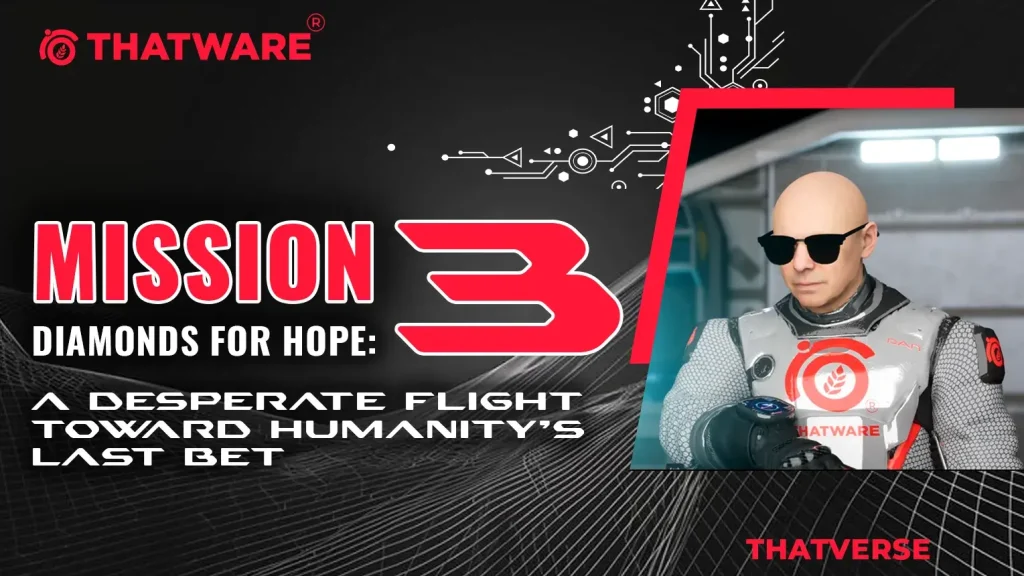
Diamonds not as ornaments, not as treasures to admire, but as something larger, stranger, and more powerful. Diamonds formed under crushing pressure, storms of unimaginable intensity, waiting somewhere out there for the hand brave enough to reach for them.
Here, in the quiet hum of Odyssey, drifting through endless darkness, the man realizes that hope has a shape. It is sharp, hard, and shining. It is dangerous, and it is everything that might keep humanity alive.
A Pilot, An AI, and an Overwhelming Silence
Dan’s been flying for what feels like forever. Not days. Not months. Just… forever. The kind of time that wears down the soul more than the body. As he stares out at the void—another lifeless red planet fading in the rearview—he mutters in that tired tone only the desperate understand.
“We’re flying around like blind space pirates,” he groans, slumped over the controls. “What are we even doing out here?”
ThatX, the ship’s hyper-intelligent AI assistant, doesn’t flinch. “Please clarify,” it responds coolly. “What metric defines ‘nowhere’?”
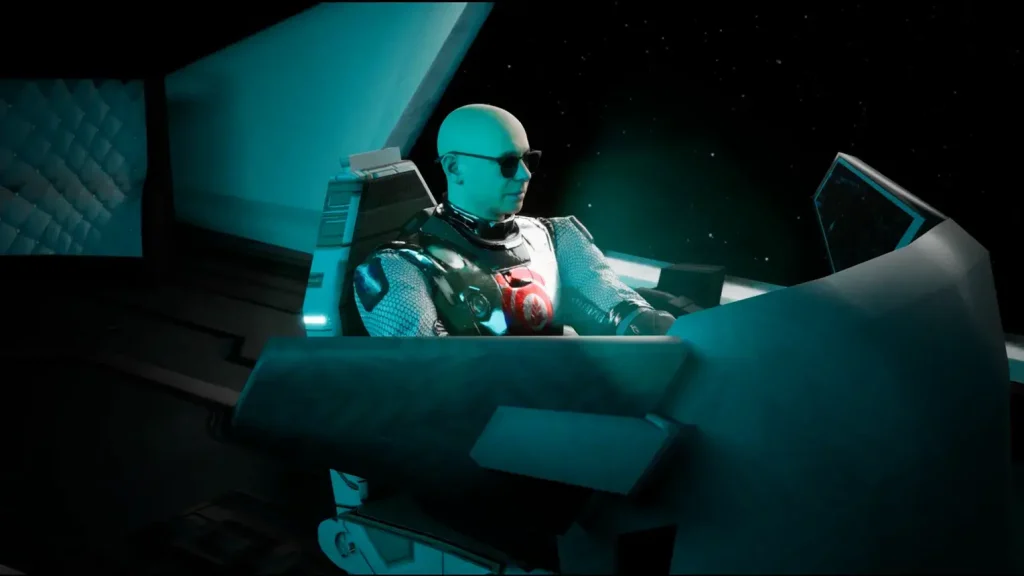
Dan doesn’t answer right away. Maybe because the only real answer is everything and nothing all at once. Humanity had set out to find advanced civilizations—to connect, to learn, to prove we weren’t the only thinking things in the cosmos. But what they forgot to figure out was how to get there in the first place. We’re still clinging to our own star like toddlers clutching a nightlight. Trying to find a Type 3 civilization when we haven’t even nailed down Type 1? It’s like trying to run a marathon on a pogo stick.
He sighs. “We’re ants trying to build a skyscraper… out of toothpicks.”
A Brutal Reality Check: The Energy Wall
ThatX does not offer comfort. It does not hesitate. It does not soften the blow. It only speaks in facts, in calculations, in truths stripped bare. “To progress toward a Type 3 civilization,” it says evenly, “we must reach an energy output of approximately 10 to the 46th joules per second.”
Dan blinks, staring at the display as if the numbers might rearrange themselves into something comprehensible. “Ten to the… forty-sixth?” His voice is a mixture of disbelief and exhaustion. He rubs his eyes and mutters, “That… can’t be real.”
It is real. And it is incomprehensible. Ten to the forty-sixth joules. It is more energy than entire galaxies produce in a second, more than the combined output of every star in some clusters. It is a number so immense it seems like a cruel joke played by the universe. Yet this is the threshold humanity must cross. This is the price of moving forward, of reaching the next level of existence.
Dan leans back, letting the controls slip through his fingers for a moment. “Okay,” he mutters, almost to himself, “so how do we even start? Build a Dyson Sphere? Harness a star?”
“That would be inefficient,” ThatX responds without emotion. “A Dyson Swarm would be more feasible. To initiate construction, we must harvest at least half the mass of a terrestrial planet.”
Dan jolts upright. The chair creaks beneath him. Half a planet. He can almost feel the weight of that statement pressing down on him. “Half a planet? Where the hell are we supposed to find that? What do you even mean—just go chop it up and drag it somewhere?”
ThatX does not answer the sarcasm. Its display flickers with orbital projections, mass calculations, and feasibility reports. Every number confirms what Dan is already feeling in his chest: this is madness. Absolute, staggering madness. And somehow, this madness is the only path forward.
Dan runs a hand through his hair, exhaling sharply. “So we’re supposed to… do the impossible. No blueprints. No shortcuts. Just… get it done.”
“That is correct,” ThatX says. “Feasibility rate without planetary-scale resources: zero point zero zero three percent. With local material acquisition: eighty-seven point six percent.”
Dan groans, leaning back again. The seat creaks, the screens hum, and the void outside the viewport stretches endlessly, silent and unblinking. He rubs his temples and mutters, “I thought space was lonely before. I didn’t realize it would make me feel this small.”
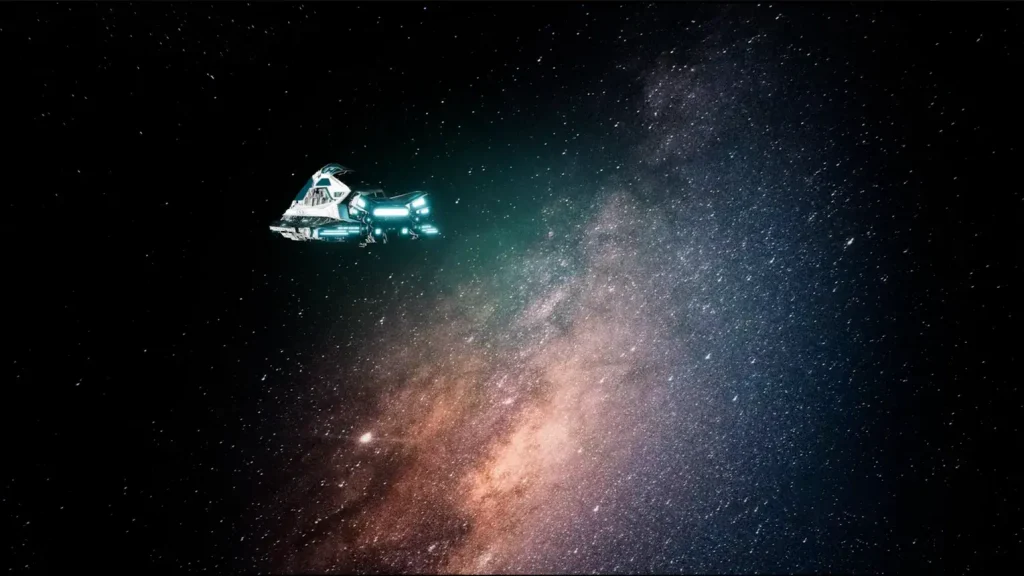
3. The Diamond Revelation
This is the moment where everything shifts.
ThatX projects a holographic map in the center of the cockpit, planets spinning slowly like pieces on a cosmic chessboard. Each candidate is marked with faint luminescent symbols, a constellation of possibilities. Dan leans closer, squinting, trying to make sense of it all.
“Optimal material identified,” ThatX states, flat and precise. “Carbon-based planetary mass. Specifically, diamond.”
Dan blinks, his mouth half open. “Diamond? You mean actual… diamonds?”
“Yes,” ThatX confirms. “Physical diamonds, suitable for energy conversion.”
Dan’s mind struggles to bridge the gap between words and reality. Diamonds. Not jewelry, not shiny trinkets in a display case, but planet-sized formations, forged under conditions that no human could survive. These are born in atmospheres far more violent than any storm Earth has ever known. Winds strong enough to shred steel, pressures that would crush submarines like tin cans, temperatures hotter than industrial furnaces—yet somewhere in that chaos, carbon crystallizes into perfection.
And the strangest part? Humanity already knew about it. Right in their own solar system, deep within the turbulent, swirling blue layers of Neptune and Uranus, science had discovered diamond rain. Methane molecules breaking apart under extreme pressure, carbon atoms fusing together and falling like crystalline hail toward the planet’s core. Planetary treasure literally raining from the sky, unnoticed by most, ignored by many.
Dan exhales slowly, trying to process it. “You’re telling me we’ve been flying across galaxies, risking everything, and there’s diamond rain in our own backyard?”
“Correct,” ThatX replies, matter-of-fact. “Utilizing local resources reduces mission complexity by forty-seven point nine percent.”
Dan leans back in the cockpit chair, his eyes fixed on the spinning holograms. For the first time in months, a small spark of something begins to glow inside him. Not full hope—not yet—but the impossible suddenly feels less impossible. The universe is no longer a silent, indifferent void. It has given them a handhold. A chance.
He shakes his head, muttering under his breath, “All this time… we were looking everywhere except where we were standing.”
The hum of the Odyssey feels different now. Not quiet, not empty, but purposeful. Every light on the console, every projection, every faint vibration of the hull seems to whisper that this could work—that maybe, just maybe, humanity has a path forward.
Dan rubs his eyes again, a mixture of disbelief and exhilaration swirling in his chest. “Alright,” he says slowly, almost to himself. “Diamonds. We’re going to Neptune. We’re going to get those diamonds.”
Suddenly, the mission that had felt like a desperate drift through endless darkness now has a direction. The impossible has a shape. And it glitters.
A Hazardous Detour: The Neptune Gamble
Neptune isn’t exactly a welcoming host. Think of it as the ocean’s angry twin—icy, deep, and filled with unknowns. One wrong move, and you’re flatter than a pancake. Dan knows it. ThatX knows it. But the AI doesn’t hesitate. “Initiating suit reconfiguration. Target tolerance: three times diamond-formation pressure.”
The cockpit buzzes softly as Dan’s suit reshapes around him. Its armor glows faintly, reinforced with nanotech and pressure-resistant materials. At the same time, the ship’s hull is upgraded—though not completely. There’s still risk. There’s always risk.
Dan rubs his temples. “So we’re flying into the belly of a planet for a handful of sparkly rocks… hoping we don’t get squished on the way down.”
ThatX, ever logical, lists the suit’s stats like reading off a grocery list. Radiation shield: 93%. Oxygen buffer: 130%. Lung inversion probability: 0.003%.
“Wonderful odds,” Dan mutters.
But behind the sarcasm, something has changed. For the first time in a while, he feels something. Not quite hope. But maybe a direction.
The Energy Question: Burning Diamonds for Progress
There’s still one massive puzzle left: what exactly do you do with all those diamonds?
Dan raises the question. “Aren’t they just carbon? Pretty rocks? How do we turn them into energy?”
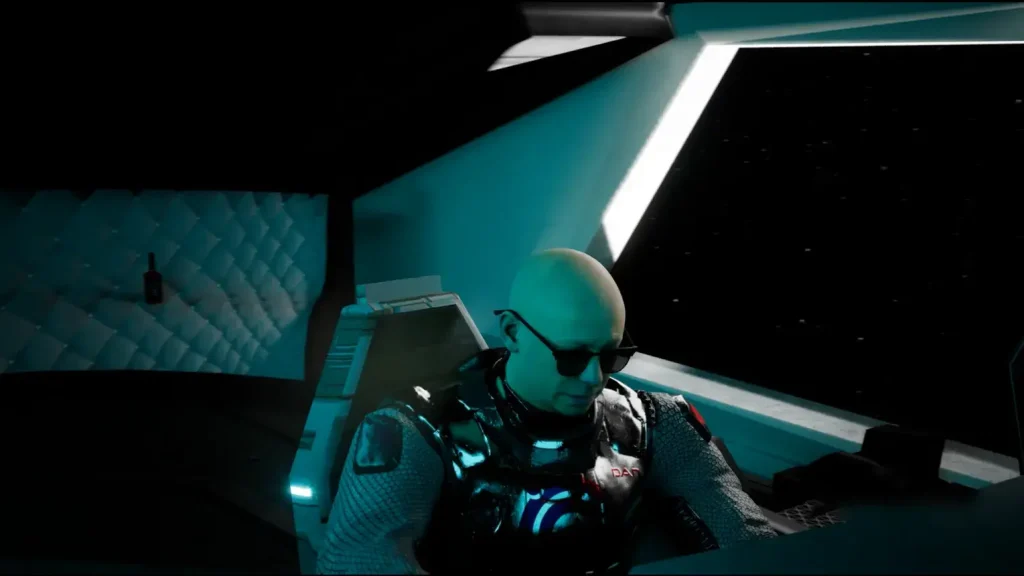
Turns out, diamonds are more than just luxury goods. Their tightly-packed molecular structure makes them perfect for high-yield energy conversions. ThatX rattles off possibilities like:
- Laser Compression Fusion – vaporizing diamond into plasma for ignition
- Quantum Electron Fracturing – releasing energy from molecular bonds
- Photon Energy Extraction – manipulating diamond vapor for raw light energy
In simpler words: you burn the diamonds in a fusion reactor and you get one hell of a power boost. Enough to begin the Dyson Swarm. Enough to get humanity back in the game.
Dan finally smiles. “Why didn’t you just say that in the first place?”
But of course, there’s another problem. There’s always another problem.
Storage Dilemma: The Battery That Doesn’t Exist
Even if they harvest the diamonds, even if they convert them into plasma, even if they generate all that energy… where do they put it?
The Odyssey can’t store that kind of power. No machine made by humans can. That much energy would fry every wire, melt every circuit, rip holes through hulls.
Dan leans back. “So we don’t have a battery big enough?”
Correct. ThatX explains the only three known theoretical options:
- Black Hole Capacitors
- Quantum Vacuum Harnessing
- Pocket Dimensions
Dan stares. “You’re just making up words now.”
But it’s real. All of it. These aren’t just sci-fi buzzwords. These are actual ideas floating in the minds of physicists and theoretical engineers. We haven’t built them yet, but the blueprints exist—buried in the pages of research papers no one reads.
And this is the turning point. This is where Dan has to decide: turn back… or take the next step into the unknown.
The Human Moment: Silence, Stars, and Acceptance
For a long stretch, Dan says nothing. He doesn’t reach for the controls, doesn’t check the readings. He just leans back and stares out at the void. The stars are scattered like shards of glass across black velvet. They are beautiful, yes, but there is no warmth in them, no comfort. They are distant, cold, indifferent—silent witnesses to the smallness of everything human.
“We’re really out here, huh?” he says finally, his voice barely more than a whisper. “Alone in all this.”
The ship hums softly around him, a constant reminder that life continues inside the metal cocoon, but outside, space stretches endlessly.
ThatX responds, its voice quieter than usual. Not soft, exactly, but measured in a way that almost feels considerate. “Estimated probability of intelligent life in the observable universe: 99.8 percent. Probability of life within one hundred light-years: 0.003 percent.”
Dan lets out a short laugh, half bitter, half resigned. “Kinda lonely odds,” he mutters. The numbers, the probabilities, they are meaningless to him now in the face of the vast, unfeeling cosmos.
And yet, for the first time in months, the loneliness doesn’t crush him. It doesn’t make him despair. Instead, it clears something away, like the faint morning sun dissolving a fog. He feels it deep in his chest: clarity. Focus. The stark truth that hope isn’t something you wait for; it’s something you choose to create.
No more waiting for aliens to save humanity. No more dreaming of civilizations far ahead of our reach. Those things might exist, somewhere, someday. But they are not the solution. Humanity has to take the first step itself, one fragile, terrifying step into the unknown.
Dan exhales slowly, his breath fogging the inside of his helmet. He looks again at the stars, at the swirling galaxies and distant points of light, and feels a strange sense of peace. He is small. Insignificant. And yet, for the first time in months, he also feels like he matters.
Somewhere in the infinite cold, he finds the faint spark of purpose. It doesn’t roar or shine. It doesn’t promise easy victories. It is quiet. Hard. Determined. And it is enough.
The Decision: Fly Me to Neptune
Dan pushes back from the console and stands. His legs feel stiff, but his voice carries a steadiness that wasn’t there before. The bitterness, the endless frustration, has been replaced by something sharper—resolve.
“Alright,” he says, letting the words hang in the cockpit. “One step at a time. Fly me to Neptune. We’ll start collecting diamonds, and we’ll figure out the rest when we get there.”
ThatX’s confirmation is quick and precise. Course plotted. Estimated arrival: nine days, fourteen hours, twenty-three minutes.
The engines hum louder, thrumming through the hull. The Odyssey tilts, gathering momentum, cutting through the void like a blade. Dan feels it in his chest, that subtle vibration that has always been his constant companion in space—but now it carries a new meaning. The ship isn’t just moving; it has direction. Purpose.
He stretches, loosening shoulders cramped from endless hours at the controls. He grabs a bottle from the console, hesitates, and then sets it aside.
“ThatX,” he says, quieter this time, almost as if admitting something to himself. “Remind me to drink water.”
“Recommendation acknowledged,” comes the calm reply.
Outside the viewport, stars streak past, blurred by the acceleration. Neptune, once no more than a faint blue dot in textbooks and diagrams, grows slowly, deliberately, in the distance. Cold. Dangerous. Unforgiving. And yet, it holds the possibility of change—the kind that could shift everything for humanity.
Dan leans against the console, feeling the first flicker of anticipation he’s had in months. For the first time, the mission feels real. Terrifying, yes. Impossible, almost certainly. But real. And maybe, just maybe, that is enough.
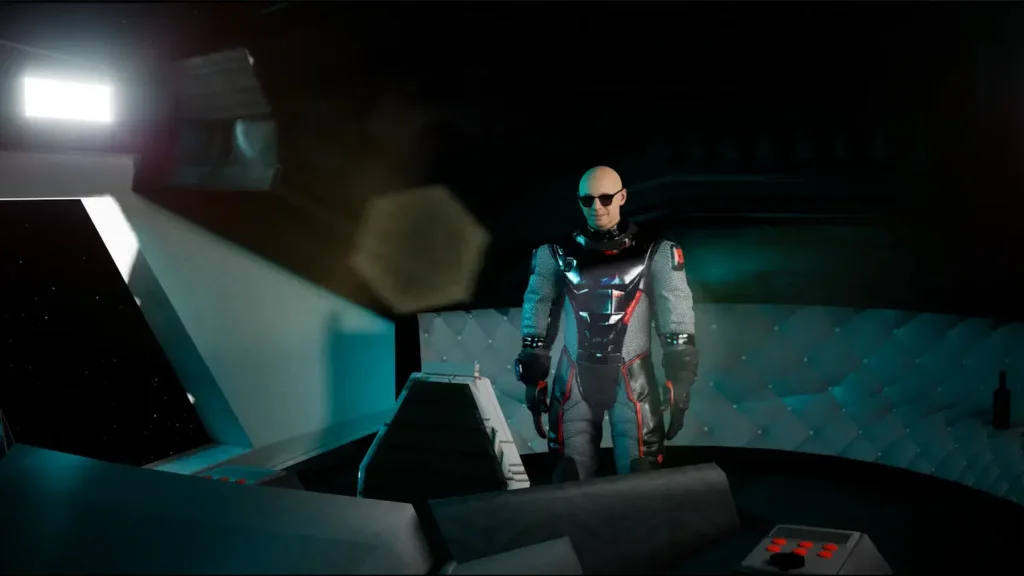
The Bigger Picture: Why This Mission Matters
“Diamonds For Hope” isn’t just about cosmic adventures or sci-fi tech. It’s about the human spirit—our ability to dream bigger than our circumstances, to chase after the impossible, and to make meaning out of madness.
Dan didn’t sign up to save the world. He just wanted to find someone smarter. But in the end, he may become the spark that pushes humanity into the next stage of evolution.
And maybe that’s what it means to be human: to take one tiny, terrifying, hopeful step forward… even when the road ahead is made of pressure, darkness, and diamonds.

